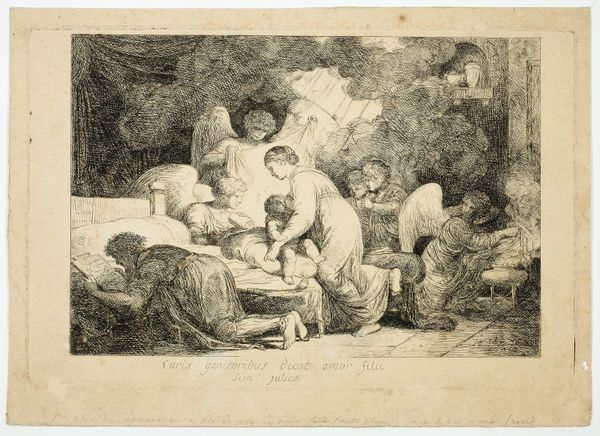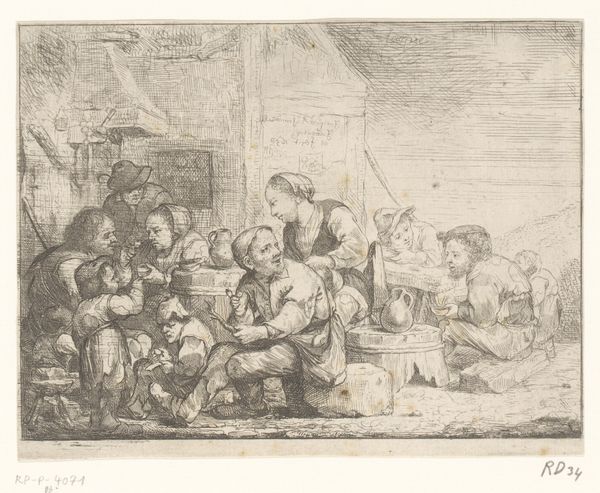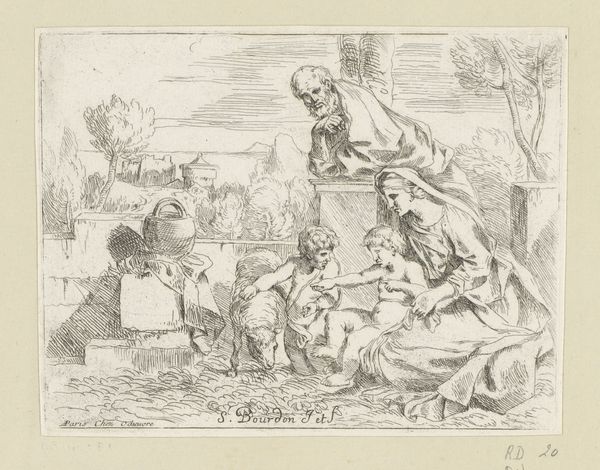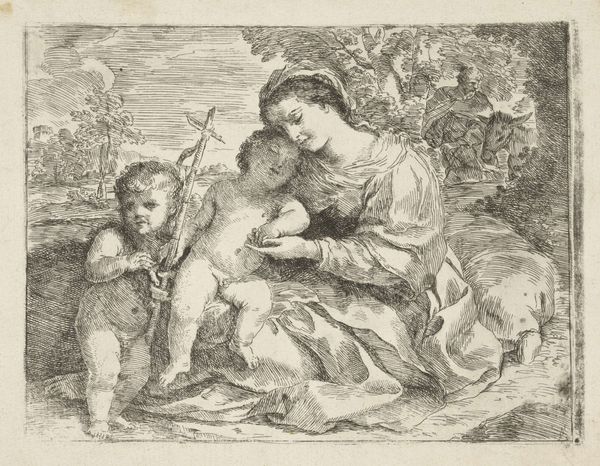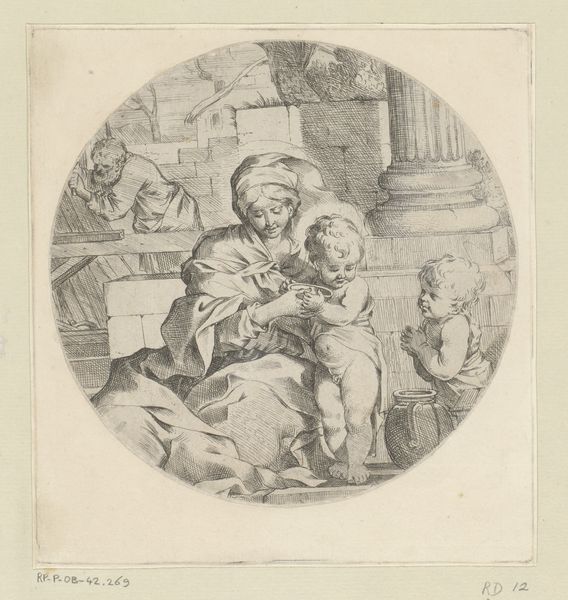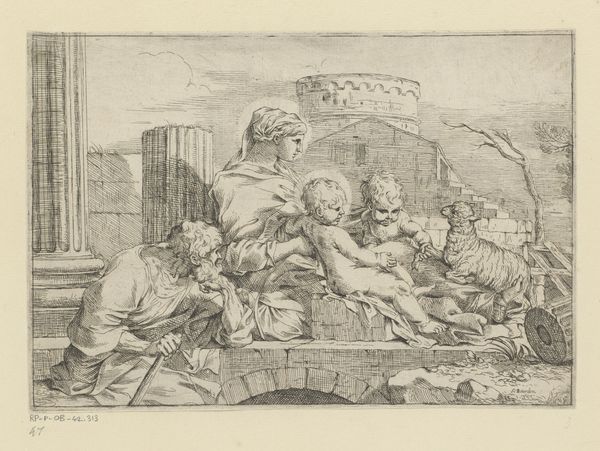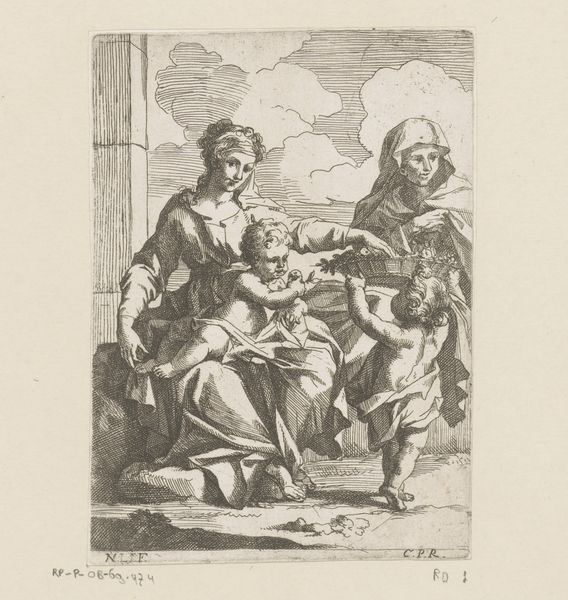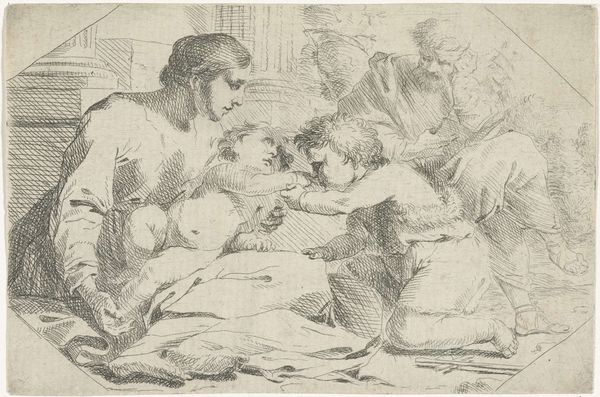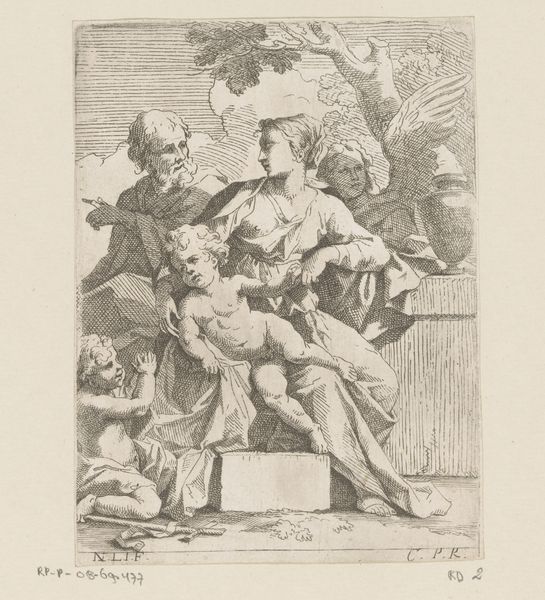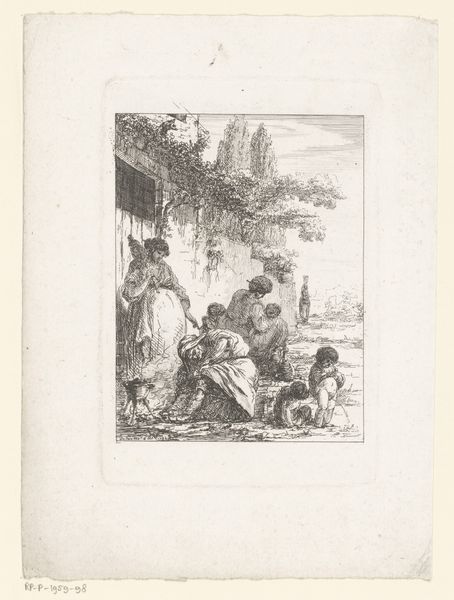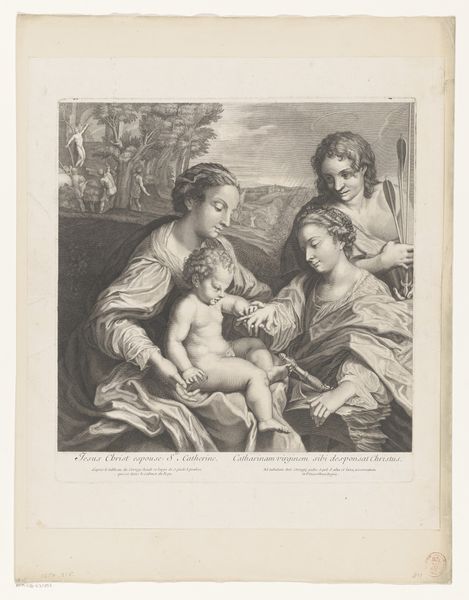
#
ink drawing
#
pen illustration
#
pen sketch
#
pencil sketch
#
old engraving style
#
personal sketchbook
#
ink drawing experimentation
#
pen-ink sketch
#
pen work
#
sketchbook drawing
Dimensions: height 123 mm, width 174 mm
Copyright: Rijks Museum: Open Domain
Editor: This pen and ink drawing titled "Holy Family with the young John the Baptist" is by the Monogrammist AGC and dates back to the 17th century. The mood seems contemplative, maybe even a little melancholic, given the muted tones and serious figures. What catches your eye, and how do you interpret this work through a historical lens? Curator: This work speaks volumes about the role of religious imagery in 17th-century society. Images like these weren't just aesthetic objects; they were tools for shaping belief and reinforcing social norms. Notice how the Holy Family is presented not in opulent settings, but in a more relatable, almost domestic scene. This democratization of religious iconography was part of a broader movement. Do you see how that contrasts with earlier depictions of the Holy Family? Editor: Yes, I see that. It's interesting that it appears more as a domestic scene. The landscape even lends a relatable, pastoral quality to the depiction. Was this accessible and "domestic" portrayal intended to be more didactic for the common person? Curator: Precisely. Printmaking allowed for wider circulation of these images, bringing religious narratives directly into homes and everyday life. The Monogrammist AGC may have been responding to shifts in religious sentiment or the evolving demands of the art market. What do you make of the presence of John the Baptist as a child? What does that add? Editor: I hadn't thought about it, but it highlights the interconnectedness of their destinies, almost foreshadowing their roles within the religious narrative. This connection, reproduced on a larger scale and made widely available to the public, feels like a conscious choice intended to inspire a personal connection with the divine. Curator: Exactly! This piece is a beautiful example of how art operates within a complex web of cultural, religious, and economic forces, influencing the way people understood their world. It prompts us to ask: Who was the intended audience, and what impact was this piece expected to have on them? Editor: I hadn't considered it in this way before. Thank you, it's fascinating to look at it through that lens. I appreciate it.
Comments
No comments
Be the first to comment and join the conversation on the ultimate creative platform.

